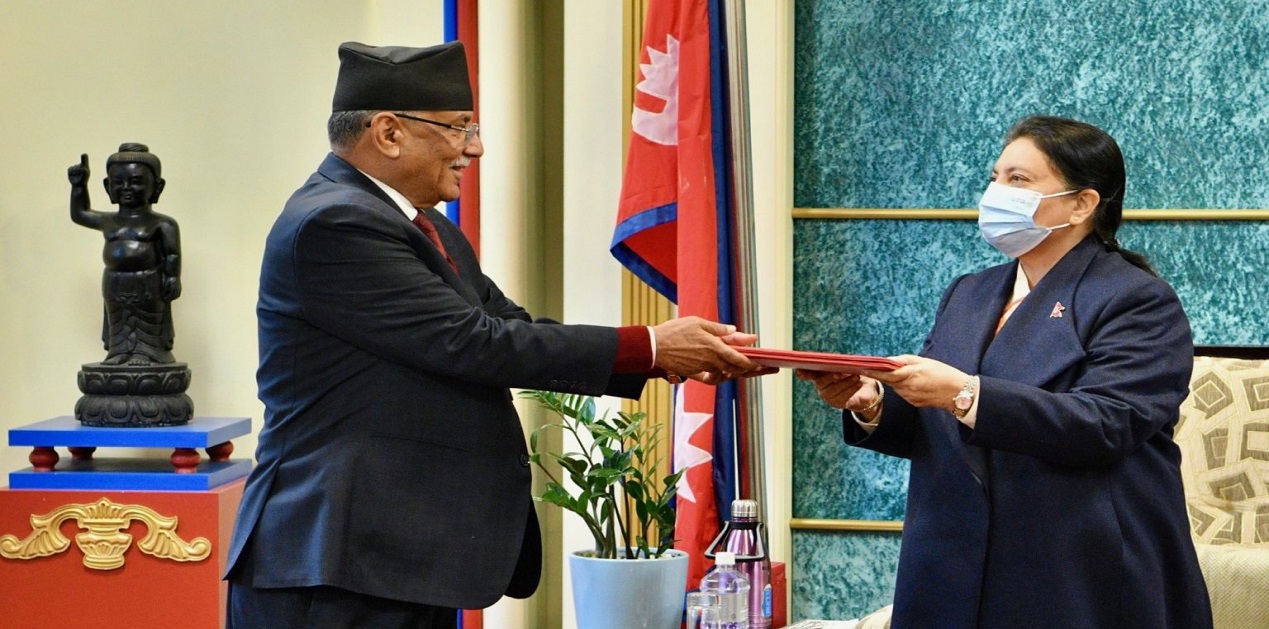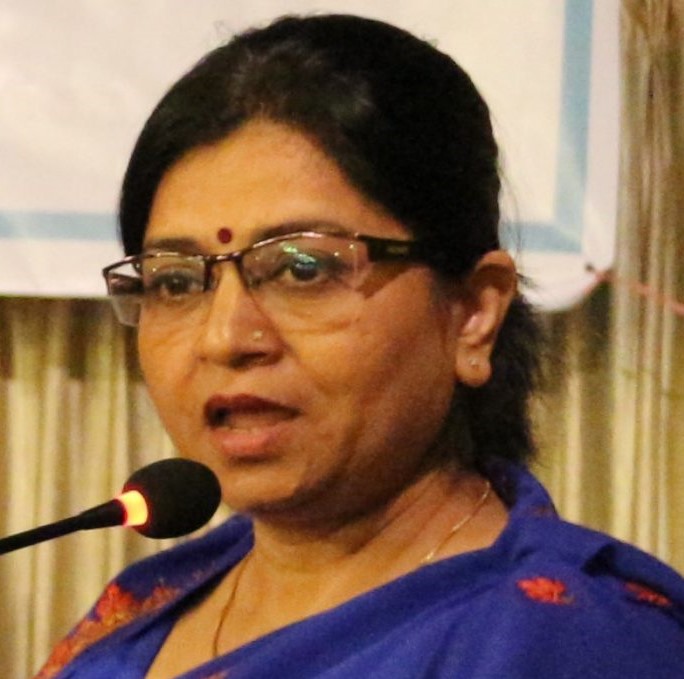New government has been formed in Nepal after much anticipation with Prachanda as the Prime Minister. Leading 170 members in 275 member House of Representatives, his party Nepal Communist Party (Maoist Centre) [NCP(MC)] has allied with KP Sharma Oli led Communist Party of Nepal (United Marxist Leninist) [CPN(UML)] and four others; Rashtriya Swatantra Party (RSP), Rashtriya Prajatantra Party (RPP), Janata Samajbadi Party (JSP), Janamat Party (JP), Nagrik Unmukti Party (NUP) and four independents.
The colorful Nepali politics have astounding plots and subplots. Prachanda had a pre-poll alliance with Nepali Congress (NC) led by Sher Bahadur Deuba, Madhav Nepal led CPN(Unified Socialist), Loktantrik Samajbadi Party(LSP) led by Mahendra Thakur and Chitra Bahadur KC’s Rashtriya Janmorcha. It is said that some in the Nepali Congress wanted the party to go for polls without alliance with the Maoists. However, Prachanda and Madhav Nepal had supported Deuba to form a government after breaking away from Nepal Communist Party when Oli government was removed on Supreme Court’s order. The alliance continued till the 2022 election. It is alleged that there was a pre- poll understanding that in case the alliance won then Prime Minister’s position would be shared between Deuba and Prachanda.
Elections were held for the federal parliament and seven provinces on 20 November. In the 275 member federal parliament, the House of Representatives (lower house) has two kinds of votes: First Past the Post (FPTP) for 165 seats and Proportional Representation (PR) for 110. Overall NC has secured 89 seats followed by CPN (UML) with 78 and CPN (MC) with 32. The NC and CPN (MC) alliance had secured 136 seats in the parliament and required two more to form the government. Interestingly in the provinces also the alliance had a majority in all. However there was a huge twist in the story. There was internal wrangling for the coveted post of the PM. Prachanda wanted the PM position in the first term of two and half years which was not allegedly acceptable to Deuba and his inner party circle advisors. In the meantime, UML was talking to NC and also to the Maoists. President Bidya Devi Bhandari finally invoked article 76 (2) of the constitution and gave an ultimatum to form a government within a week by 5 pm on 25 December 2022. Under article 76 (2) the President can call parties to show majority with the support of two or more parties, if no single party secures a clear majority. On December 25, Oli and Prachanda gave a surprise Christmas gift to the country by aligning to form the government. It cost NC not only the federal government but also in the provinces.
The known monarchists RPP had pre-poll alliance with the CPN (UML). It has given support to the government but has not joined it. Some of their key positioning has been to restore monarchy, directly elected executive Prime Minister and a Hindu state. It’s a political contradiction that RPP is giving support to the government led by Prachanda who was responsible for giving a strong voice to republican Nepal and ending monarchy.
The election has sprung some surprising results. A new party Rashtriya Swantantra Party (RSP) led by media person Rabi Lamichhane has emerged in the political scene. It secured 7 seats in the FPTP and 11 in PR. The party had not contested in all the federal constituencies and no candidate in the provinces. One of the major characteristics of the party was that it had fielded young professionals. Toshima Karki, 32 years of age, doctor by profession defeated Pampha Bhusal of CPN (MC) from Lalitpur 3 constituency. Party Leader Rabi Lamichhane, 48 years old, had defeated Umesh Shreshtha of NC in Chitwan-2. It is said that in his Television programmes like Sidha Kura (Straight Talk) Lamichhane discussed social and economic issues affecting common lives. These programmes were popular amongst the Nepalis working abroad too. People could relate to him. The party has made claims that it supports directly elected PM and Chief Ministers. It wants to do away with the provincial assemblies and replace them with provincial councils elected by the local level assemblies. RSP has not only given support to the government but also bagged the post of Deputy Prime Minister for Lamichhane. Interestingly this has raised many eyebrows because there is a writ petition in the Supreme Court of Nepal on the issue of his citizenship.
CK Raut, 45 years old, the only elected leader from JP defeated political stalwart Upendra Yadav in Saptari-2. His party has bagged 5 seats through PR. In the recent past, Raut had led the Madhesi movement and was arrested and charged with sedition but joined mainstream politics after signing an agreement with KP Oli. JP has joined the government and Abdul Khan from the party is one of the four ministers picked up by Prachanda.
NUP led by Ranjeeta Shreshtha has secured 4 seats in the parliament from West Madhes. It has not joined the government but nevertheless has given support to it.
The PR system has harmed the interests of some established leaders and their parties. Madhav Nepal’s CPN (US) secured 7 seats and Mahanta Thakur’s LSP won 4 seats in FPTP but could not get 3% of votes in the PR which cost them recognition as national parties.
Many have highlighted that the young leaders are a ray of hope in the Nepali politics. They will bring new vigour, energy and ideas. People have shown faith and confidence in young politicians. Every year new voters get enrolled in the voters list. The voting pattern shows that voters are not in awe of the traditional parties or older leaders and want those who can deliver. However, the younger politicians are inexperienced and not tested. Only time will tell how they will perform. If this trend is any indication then the other major parties should take notice of the people’s mandate. They should start giving space to younger people within the party. If ignored this may lead to intra party tensions and splits. In the next five years some leaders may become too old to be active in party politics but they can definitely play a constructive role in identifying their successors and guide the party with their foresight and political acumen.
The election results show that coalition politics is here to stay in Nepal. Except in 1991 when Nepali Congress had secured a majority in the parliament, no one party has gained enough support to form government on its own. All these parties have political stalwarts who have been either PM or Deputy PM and even when in alliance they compete with each other for that coveted post or for important positions to their party men in government. Even though there is huge dissatisfaction against political instability, the present election signals towards that. The coalition partners have diverse standings and they will find it difficult to implement most of their promises. Their personal interest is the only glue that has brought them together and any breach in it may fracture the alliance. The biggest challenge would be to provide a stable government by keeping the coalition partners together.
Yet another challenge for the government would be to balance relations with its two neighbours. Some international media have named the present PM as `ex Maoist rebel leader’ or 'fierce guerrilla leader’. Many from Indian media have described the present government as `anti-India’, or `pro-China’. It will be a hard task for the government in Nepal to rise above such perceptions and deliver goods. Much of this perception stems from the past experience of strains during Oli’s regime and his nationalistic postures targeting India. However in Nepal no government is permanently pro or anti any country. Their posturing changes based on their own personal and party interests based on context, time, and place.
The present governing alliance is much to the liking of China. The election results show that NC has made inroads in the northern districts bordering Tibet where left parties had domination. Presumably the shift is due to China’s territorial encroachments in the border areas of Nepal. The previous regime of Oli was silent on the issue. China had developed good working relations with Oli and had signed a number of infrastructures related projects. They were however concerned by the Deuba government and its allies ratifying the $500 Millennium Challenge Corporation with the US. Before the elections China tried for a left party alliance. They have shown their positive response by opening a border point in Rasuwagarhi on the very next day of the government formation. A team from China Railway 1st Survey and Design Institute Group from China has also arrived in Nepal to discuss the trans-Himalayan railway project.
India has been focusing on trade and infrastructure related projects in Nepal. The government has facilitated involvement of the private sector in power trade. Presently Nepal is selling power to India to the tune of $56 million. There are efforts to have transmission grids at sub-regional level. No government in Nepal can ignore such an approach.
(The paper is the author’s individual scholastic articulation. The author certifies that the article/paper is original in content, unpublished and it has not been submitted for publication/web upload elsewhere, and that the facts and figures quoted are duly referenced, as needed, and are believed to be correct). (The paper does not necessarily represent the organisational stance... More >>
Image Source: https://peoplesdispatch.org/wp-content/uploads/2022/12/PM-Prachanda-Nepal-elections-1536x864.jpg











Post new comment